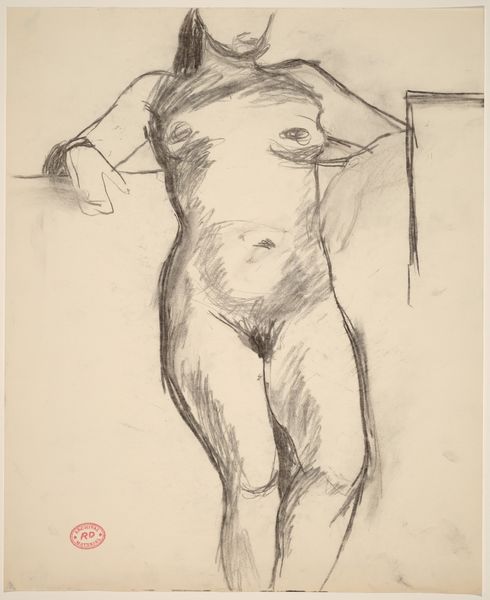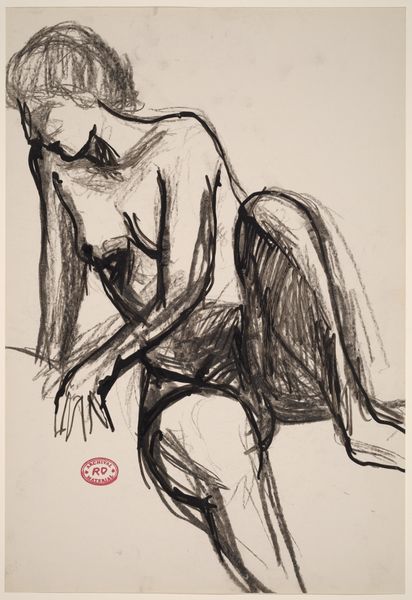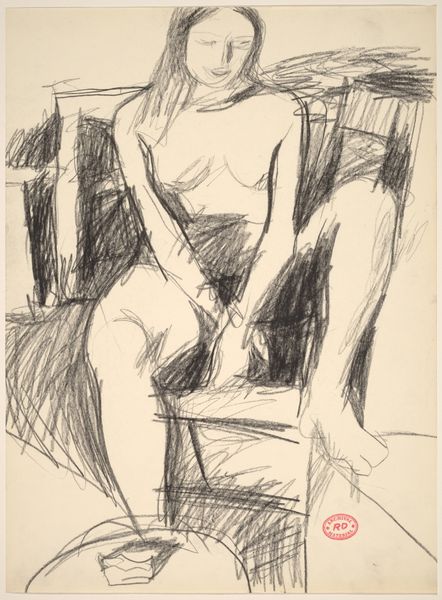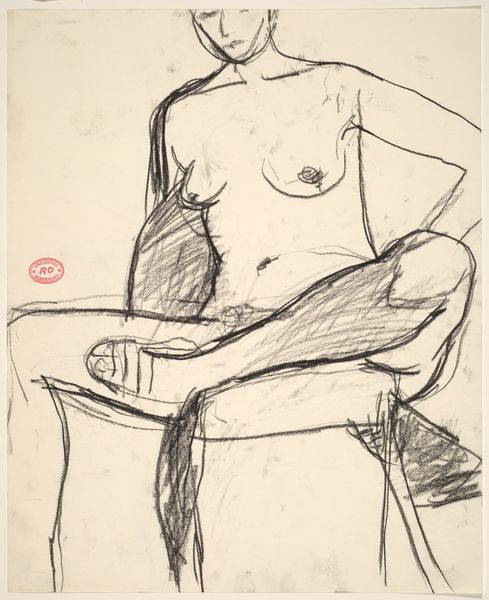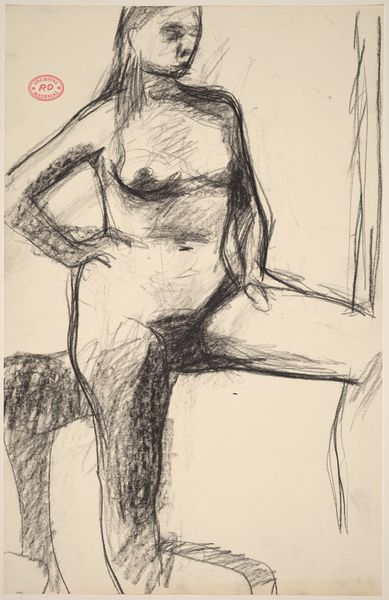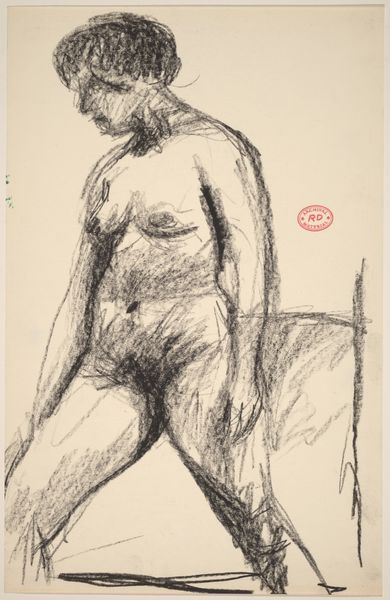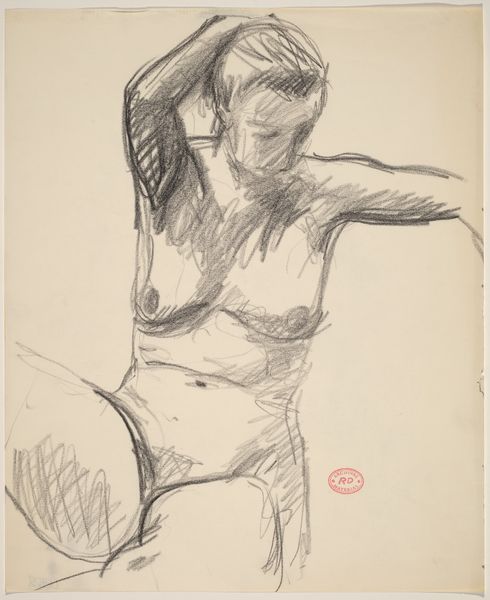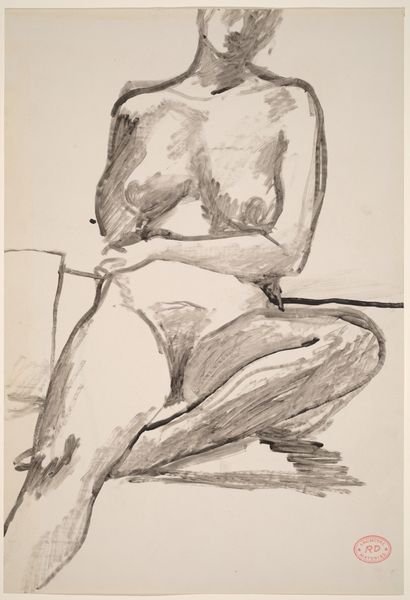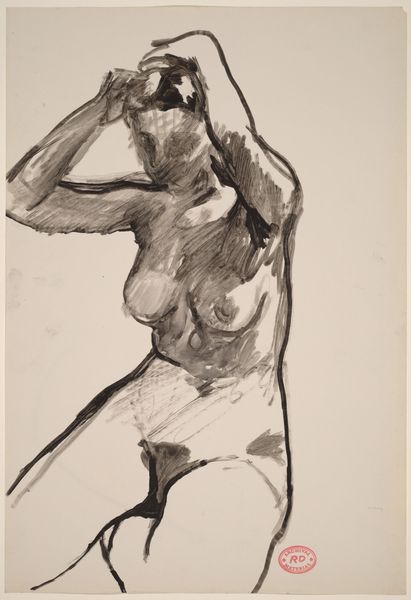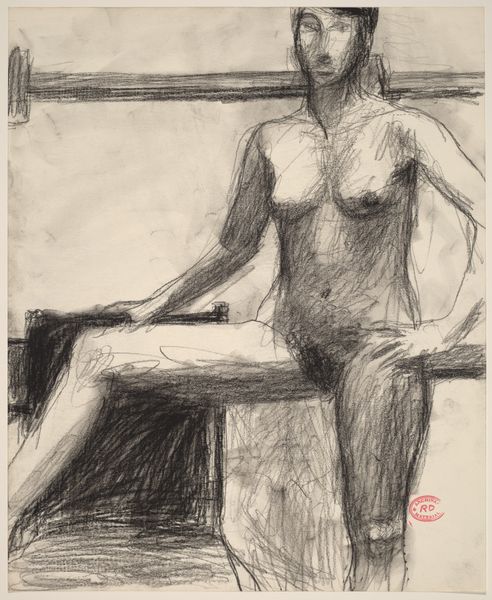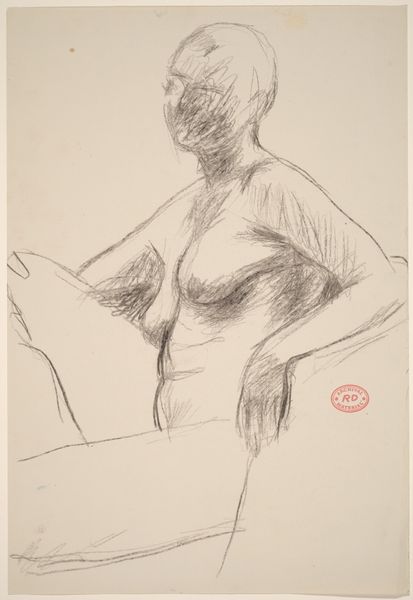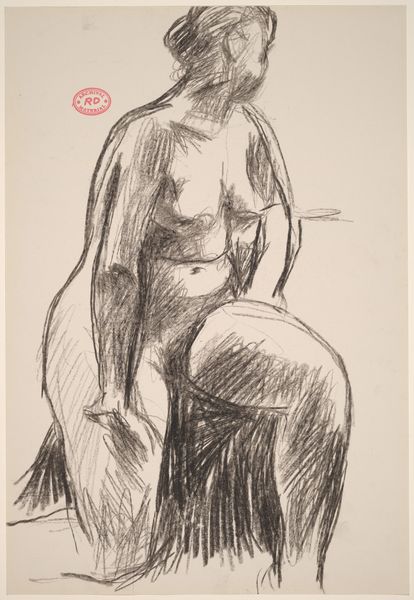![Untitled [nude in black stockings standing before an armchair] by Richard Diebenkorn](/_next/image?url=https%3A%2F%2Fd2w8kbdekdi1gv.cloudfront.net%2FeyJidWNrZXQiOiAiYXJ0ZXJhLWltYWdlcy1idWNrZXQiLCAia2V5IjogImFydHdvcmtzLzFlOWI4MTQ1LTEyYzItNDZmOS1iNjJlLTNkMjk3MTU3ZWFmZi8xZTliODE0NS0xMmMyLTQ2ZjktYjYyZS0zZDI5NzE1N2VhZmZfZnVsbC5qcGciLCAiZWRpdHMiOiB7InJlc2l6ZSI6IHsid2lkdGgiOiAxOTIwLCAiaGVpZ2h0IjogMTkyMCwgImZpdCI6ICJpbnNpZGUifX19&w=3840&q=75)
Untitled [nude in black stockings standing before an armchair] 1955 - 1967
0:00
0:00
drawing, pencil
#
portrait
#
abstract-expressionism
#
drawing
#
pencil sketch
#
figuration
#
bay-area-figurative-movement
#
pencil drawing
#
pencil
#
portrait drawing
#
academic-art
#
nude
Dimensions: overall: 35.3 x 27.5 cm (13 7/8 x 10 13/16 in.)
Copyright: National Gallery of Art: CC0 1.0
Curator: Let's delve into Richard Diebenkorn's "Untitled [nude in black stockings standing before an armchair]," a pencil drawing made sometime between 1955 and 1967. Editor: The immediacy strikes me. The sketch is raw, almost vulnerable, the strokes so visible they speak of the artist’s hand and pressure against the page. Curator: The drawing style places this piece squarely within the milieu of Abstract Expressionism and its emphasis on figuration, departing from complete abstraction yet deeply rooted in observation. This raises important questions about the artist’s position towards the female nude within mid-century American art. The black stockings, in particular, hint at a performance of identity, perhaps reflecting changing social norms or anxieties surrounding female sexuality. Editor: You've mentioned pencil as the medium and the labor involved interests me, that repetitive motion to achieve areas of tonality, especially in the areas of shading around her body, building form from line. Also consider the kind of paper, the grain and weight – how much could it take before it tore, under the artists marks? It shows evidence of process and of materiality so effectively. Curator: Indeed. We can consider how the female form, coupled with that armchair, often serves as a prop, both literally and figuratively. Who is invited to sit and who is not? Who is the viewer being positioned as? It provokes a re-thinking of whose gaze is at play, in a wider dialogue surrounding the ownership and presentation of female identity. Editor: And there's a certain roughness here; it challenges those refined drawings. I imagine this drawing coming to life in his studio, quickly captured while in process. Curator: It gives us insight, as well, into how traditional academic art, emphasizing precise representation, still found relevance and a kind of rebirth within a more experimental approach. Editor: Examining that raw process offers access not just to the artists' eye, but their making hand. I find that intensely compelling. Curator: I agree. And to me, Diebenkorn invites us to unpack the multifaceted layers of power, identity, and the ongoing conversation surrounding the depiction of women in art.
Comments
No comments
Be the first to comment and join the conversation on the ultimate creative platform.

